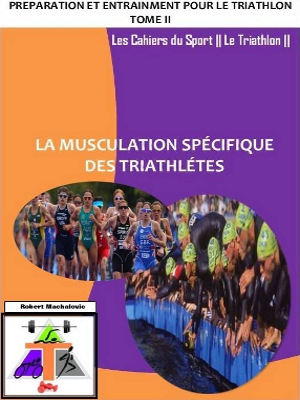Speed abilities
Écrit par EL HAOUAT MedHassan There are different manifestation of speed in training, e.g. the speed of a sprinter in a 100-meter run, reached javelin release speed, maximum speed of the starting run of the athlete in a long-distance jump, the speed of changing position of the middle player from the middle part of the net into side area, break-free with the ball in basketball etc. Sports performance is conditioned by performing a given movement with maximum speed possible. External manifestation of the resulting speed of both cyclic movement and single-speed movement are always related to as fast carrying out of the movement as possible along defined specific track through muscle contraction. The specificity of movement is given by specific skill in the sports discipline. Manifestations of speed in sports are always characteristic in their maximum intensity. Acyclic movement (throws, casts) can be performed against slight resistance (up to 20 % 1RM). Cyclic movement (sprint) is usually performed without resistance without any significant change is direction. During cyclic movement, a significant change in direction can occur accompanied with decrease and subsequent increase in speed and movement frequency (movement of player with the ball in handball). In this case, it is specific manifestation of speed which is called agility. As far as the duration of the performance of specific motor activity is concerned, it is speed up to 15 seconds (duration exceeding 15 seconds is speed endurance). An independent part of speed abilities is represented by the scope of reaction speed. Reaction speed is manifested by speed as a reaction to a given stimulus (e.g. reaction to start-up shot in 100-meter sprint) and it is understood as time lasting from stimulus to the start of motor activity.
There are different manifestation of speed in training, e.g. the speed of a sprinter in a 100-meter run, reached javelin release speed, maximum speed of the starting run of the athlete in a long-distance jump, the speed of changing position of the middle player from the middle part of the net into side area, break-free with the ball in basketball etc. Sports performance is conditioned by performing a given movement with maximum speed possible. External manifestation of the resulting speed of both cyclic movement and single-speed movement are always related to as fast carrying out of the movement as possible along defined specific track through muscle contraction. The specificity of movement is given by specific skill in the sports discipline. Manifestations of speed in sports are always characteristic in their maximum intensity. Acyclic movement (throws, casts) can be performed against slight resistance (up to 20 % 1RM). Cyclic movement (sprint) is usually performed without resistance without any significant change is direction. During cyclic movement, a significant change in direction can occur accompanied with decrease and subsequent increase in speed and movement frequency (movement of player with the ball in handball). In this case, it is specific manifestation of speed which is called agility. As far as the duration of the performance of specific motor activity is concerned, it is speed up to 15 seconds (duration exceeding 15 seconds is speed endurance). An independent part of speed abilities is represented by the scope of reaction speed. Reaction speed is manifested by speed as a reaction to a given stimulus (e.g. reaction to start-up shot in 100-meter sprint) and it is understood as time lasting from stimulus to the start of motor activity.
Speed can generally be defined as an ability to reach high speed and frequency of cyclic, single-speed (acyclic) or combined movement through muscle contraction.
Coordination Abilities
Écrit par EL HAOUAT MedHassan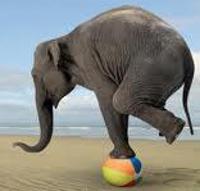 Coordination ability means an ability to quickly and purposefully perform difficult spatio-temporal movement structures. Within this context, coordination abilities are understood as an externally visible manifestation of the control and regulation processes of the motor activity of the central nervous system. The complex of coordination abilities consists of a group of basic coordination abilities.
Coordination ability means an ability to quickly and purposefully perform difficult spatio-temporal movement structures. Within this context, coordination abilities are understood as an externally visible manifestation of the control and regulation processes of the motor activity of the central nervous system. The complex of coordination abilities consists of a group of basic coordination abilities.
Basic coordination abilities:
Adaptive ability enables modifications of motor activity ob the basis of comparison or anticipation of new or changing conditions during performing motor activity.
Balance ability is understood as an ability to keep body or its parts in a relatively stable position.
Combinatory ability is understood as an ability to simultaneously put partial movements together into more complex movement structures.
Kinesthetic diferentiation ability means an ability to realize kinematic and dynamic features of movement.
Plus...
Technical Preparation
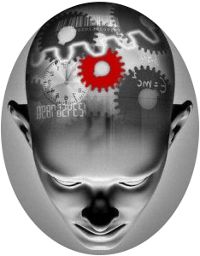 The aim of technical preparation is to create and improve sports skills. Each sports skill has a given way of solving a motor task (contents of a sports skill) in accordance with the rules of a given sport, biomechanical rules and locomotive possibilities of the athlete which are referred to as technique. Specific individual adjustment of technique by an athlete is referred to as style.
The aim of technical preparation is to create and improve sports skills. Each sports skill has a given way of solving a motor task (contents of a sports skill) in accordance with the rules of a given sport, biomechanical rules and locomotive possibilities of the athlete which are referred to as technique. Specific individual adjustment of technique by an athlete is referred to as style.
Procedure of acquiring motor skills:
- Sports skills are created on the basis of information on external and internal environment of the athlete and their synthesis into a complex image about the situation (skill) to be solved.
- Creating such image is carried out on the basis of information acquired from senses (visual, audio, locomototive and positional) – perception.
- By repeating, perceived situations are gradually being fixed into corresponding perception patterns.
- Through afferent pathways, files with such information are transfered to CNS where they are further analysed in programming processes.
- It is here that the neural basis of relevant program is formed.
- The program is stored in the relevant memory.
- Selected solution program is implemented by relevant structures of neural impulses which evoke relevant activities within skeletal muscles.
- Gradually, structures of conditioned reflexes (movement stereotypes) in the form of motor patters are created.
- By repetition, these patterns are being formed into independent neuro-physiological units (perception patters, programs of motor solutions).
- To a certain extent, they are independent and can be combined into new units.
Children sports training
Écrit par EL HAOUAT MedHassan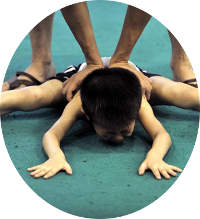 Anyone who performed some sport actively can certainly remember their beginnings and their first coaches. For a child who starts to attend some children sports club at an early age, the figure of the coach means authority. Coaches working with beginning athletes usually determine whether sport shall become part of their entire lives or not. Therefore, the approach and knowledge of the coach is of utmost importance. In children sports training, the coach is faced with many difficulties which he or she must be aware of. The most important difficulties are as follows:
Anyone who performed some sport actively can certainly remember their beginnings and their first coaches. For a child who starts to attend some children sports club at an early age, the figure of the coach means authority. Coaches working with beginning athletes usually determine whether sport shall become part of their entire lives or not. Therefore, the approach and knowledge of the coach is of utmost importance. In children sports training, the coach is faced with many difficulties which he or she must be aware of. The most important difficulties are as follows:
Not every top athlete can be a high-quality coach of children.
In common practice of sports clubs, youth coaches are recruited among the top athetes of the club. Such coaches start training children without any practical experience and often also without required coach license. Not everyone is able to face this situation because experience which they have acquired during their active career need not (and often they do not) work with children.
Not every active parent can be a good-quality coach of children.
Frequently, coaches of children are recruited among parents. In good faith, they may make crucial mistakes in the training process, often in the area of technical and fitness training.
Ambitious coach.
This type of coach is too much focused on immediate performance without respecting the age of the children. This approach suits the training conception of early specialization.
Negative relationshipt coach-child as an athlete.
Affection and unfortunately aversion as well are manifested in any relationship. More often than not, it happens that the coach prefers some of his or her trainees on the basis of his or her affection. Children who are being disadvantages in this manner can be subject to frustration and consequently lose any interest in the specific sport.
Parent as a sponsor not only in team sports.
Financial aids from parents is perfectly alright. However, coaches cannot be under pressure of such parents-sponsors who can feel that they have thus for example “ensured” that their children will remain in the basic team forever.
The way to controlled training process and meaningful planning of training was long, starting with the first of attempts and errors, leading to scientific based planning which has started to develop during the 19th Century.
Developing or training physical abilities has existed, though in a basic form at first, since the ancient times; it was used for Olympic Games preparation or for military purposes. First systematic principles in training were probably used by the Greek athlete Milon who implemented the principle of systematic planning as early as in the 6th Century BC. He determined the training cycle by carrying a bull calf on his back each day until the animal reached maturity. Since the mid-19th century studies on human muscular performance have been appearing and these scientific results were published in the then popular Philosophical Magazine. At the turn of the 19th and 20th centuries, first studies on human fatigue during work and exercise appeared. Modern scientific theories from the mid of 20th century formed the basis of training planning – periodization. It was introduced to training practice in the 1950s and early 1960s when coaches realized that focusing on an important competition was more effective than preparing athletes for a year-round competition programme as the athletes are not able to withstand the enormous training load to which they were subjects. The roots and idea of periodization come from Hans Selye’s model, known as the General Adaptation Syndrome which was first used by the athletic community in the late 1950s. Selye identified sources of biological stress and referred to them as eustress, which denotes beneficial muscular strength and growth, and as distress, which is stress that can lead to damage, disease, and necrosis of tissue.
Periodization is an organized approach to training which involves progressive cycling of various aspects of a training program during a specific period of time. It can be defined as the purposeful variation of a training programme over time, so that the competitor gets closer his or her optimum adaptive potential just before an important event. It is based on the principles of multilateral development, specialization, variety and long-term training. Out of those, the first three are necessary for optimizing physiological factors, whereas long-term planning provides the athlete during with gradual improving of physical performance in the course of time. In the periodization, the training process is distributed in time intervals, the magnitude of which may range from days to weeks, months or even years. During each of these time intervals, a particular element of performance is accented (e.g physical fitness, technique etc.) and time intervals must respect the main tasks of ATC macrocycle – performance development, stabilization or tapering. The original idea of periodization is the basis of training process planning for all age categories or performance levels.
System and conditions for good and purposeful training process planning
Periodization is a concept, not a model. It is a systematic attempt to gain control over training adaptive responses while preparing for a competition. This concept is created with the help of several key elements which we can be divided into two parts: planning macrostructure and microstructure.
Basic elements of macrostructure:
- systematic approach
- a strategy to distribute training loads in relation to competition goals
- a defined structure for progress
- an approach of building subsequent training units
- a set time frame for executing the plan
- a complex training containing all elements
- respecting the unstable nature of adaptation process
- systematic work with training variables (volume, intensity, frequency)
- choosing a method of monitoring training and assessing competition results
Basic elements of microstructure:
- competition schedule
- input training of athlete or group, with respect to the level of performance and bilological maturity
- the arrangement of training effects at optimum time, the consequence is fatique management, which eliminates stagnation, overload or overtraining
- biological rhythm of the athlete
- the variability of stimuli
- appropiateness of exercises in relation to age, performance, period etc.
- time available for training, social and economic conditions, optimizing the duration of training
- the level of motor skills and abilities of the athlete or team
- the level of the athlete’s interest, motivation and psychic characteristics
Stages of ATC – macrocycle
The aim of the macrocycle is to develop fitness, training, sports skills, tactic abilitites, psychological features, get experience and reach top performance in competition. Fitness and performance are improved during stages and cycles, therefore the process of periodization is described as outlining the macrocycle (ATC) into smaller and better manageable parts to ensure correct peaking forward to the main competition of the year. Basically, the periodization of an annual plan has four major stages: preparatory phase, pre-competition (pre-season) phase, competition (season) phase and transition (off-season) phase.
Basic scheme of annual training plan (macrocycle)
| Period | Main task of period |
|---|---|
| Preparatory | Developing fitness and training |
| Pre-competition | Tapering of performance |
| Competition | Maintaining high level of performance |
| Transition | Physical and psychic recovery |
A traditional periodization scheme plans for one peak only known as mono-cycle, focusing only on one major competition (e.g. Local Championship, National Championships, World Championship or Olympic Games). At present, many sports combine the schedule of local international competitions and use a different type of periodization. For instance, track and field has two major championships per year, indoors and outdoors, swimming has short and long course championships etc. This type of plan is called a bi-cycle. Other sports, such as wrestling, boxing, or martial arts use also a tri-cycle, or plans with multiple peaks separated by time when the athletes compete in top competitions even several times per year.

ATC Monocycle

ATC Bi-cycle
Preparatory phase
Preparatory phase is the most important part of ATC. During this stage, the athlete gains required level of fitness and technical quality for the following periods. In some kind of sports (e.g. endurance sports), it is the longest stage of annual cycle. During this stage, the training process has to ensure creating the training basis for future performance and develop preconditions for further improvement of fitness, training and performance. The principle of training during preparatory phase lies in appropriate volume and intensity of load, the kind of exercise, and including these components to the training plan at the right time and in the right rate.
Preparatory phase is of an analytic-synthetic character and may contain two or three shorter training periods. The first part is usually analytic, the training of motor abilities and technical and tactical skills is trained separately, the training mode is general and the load varies from low to medium, aiming at continuous development of performance. In the second part of this period, individual components are trained together, it is necessary to start to apply special training means; load is more intensive. The third period requires a clear shift to special training, used training means must be in accordance with actual competition movements, duration and intensity. The training methods are strictly sport-specific and large-scale exercise load (volume and intensity) is necessary for adaptation and further progress in the first transition period.
During prepeartory phase, the athlete gradually changes the rate of specific and general training means. In the first stage, general training means prevail, in the second and third stages specific training means are prevalent. At the beginning of this period, the training process is focused on volume, in the second part of the period, intensity increases.
Pre-competition phase
This period is included about 2 or 4 weeks before competitive period (season) and it should not be very long because it may result in decrease in motivation or problems with maintained reached fitness level without top competitions etc. The main task is increasing performance. Fitness training is specific, technical skills are stabilized for competition load and the variability of race movement. The main principles of training in first transition period are the following:
- Decrease in training volume
- High quality of training process
- Sufficient time for rest and recovery
- Most training exercises are specific
- Check races or competitions
Tapering training must also respect individual specifics and current health condition of the athlete.
Competitive phase
The main aim is to demonstrate the maximal level of performance. During season, the athlete usually competes in top, most important or second-level competitions. This stage is created in relationship with the dates of important competitions and can be either simple or complex. Simple competition period lasts for 2-3 months while the complex one for 4-5 months. In individual or endurance sports, this period is usually divided into two parts. The first one is reserved for developing desired performance level; the athlete usually takes part in second-level or qualification competitions (the first in-season period). During the second part, optimum hight level of performance is maintained and the athlete should reach the best results and sports shape (the second in-season period). During competition phase, sports games usually have a specific model of regular matches (1-3 matches a week).
Sports shape can be kept for about 2 or 4 weeks, therefore tapering for sports shape should be implemented for the main race only or twice during a long race season, with some recovery periods included between the periods of sports shape. For the rest competition phase, the athlete should maintain a good level of performance. Planning training during season must respect the balance of high quality of load and sufficient time for recovery.
Transition phase
Periods of demanding motor activity must be alternated with relaxation periods. This period usually lasts betwen 2 and 6 weeks, depending on the length of pre-competition and competition phase. The frequency of training is low and training units are short. The content of training is usually general and must support physical and psychic recovery.
Transition period is characterized with:
- Decrease in training load (intensity, volume, frequency).
- Training is based on general training means, however, it should be varied.
- Without competition.
- Attempt to maintain acquired level of fitness.
- Psychological recovery.
Training cycles
Early periodization models were usually based on the competitive calendar more than on adaptive processes because information regarding the latter was limited. As the knowledge about sport training theory has expanded, the training effects are based on exploiting biological principles. The rate of involution (decay) and time of maintaining the level of various training effects is a central basic building element in cyclic program design. The time of maintaining training effects is a function of the half-life of structures synthesized during adaptive tissue remodeling. As might be expected, their time courses vary. Chronically, involution is modulated by the length of the preparation period. In general, the greater the duration of a training program, the more stable its residual training effect. This allows the fitness qualities acquired during one phase to be maintained with relatively small volume-loads during the next, such that emphasis can be redirected and cumulative fatigue problems can be minimized. The most important objective of contemporary periodization is to systematically converge the cumulative or interactive effects of various means, methods, frequency of stimulus, organisation’s forms etc. The same value as a stimulus has the time of regeneration. This time is important part of adaptations processes and the time for recovery after training units of various tasks must be respected. This time is different for development of strength, endurance or velocity.
Approximate time for recovery after various types of load:
- After demanding training of maximal strength................................... 48-72 h
- After demanding and long aerobic training …...................…………. 48 h
- After easy aerobic training …………….........................................24 h
- After demanding anaerobic-endurance training ……………............. 48 h
- After easy anaerobic-endurance training …………............……........24 h
- After demanding speed training ………………………............….......24 h
- After easy speed training ……………………………..........................12 h
Training cycles – basic components of periodization
Annual training plan – macrocycle (long-term cycle) is created from shorter time cycles: mesocycle (mid-length time period, several-week training cycle), microcycle (short-term training cycle, usually one-week training cycle) and training units. Thanks to these cycles, the coach can adjust training load, recovery and main tasks. The combination of different types of training cycles within the annual plan depends on in-season specific goals. The basic macrocycle is called annual training cycle. Mesocycle (MeC) usually lasts between 2 and 6 weeks and each macrocycle typically includes several of them. The shortest training cycle is microcycle (MiC) which usually lasts for one week (ranging from 3 to 10 days) and several MiC form a mezocycle. Training volume and intensity varies in individual cycles. The profile of each cycle depends on the competition level, age, biological maturity and on the specific demands of a given sport and ATC period.
Microcycle
Microcycle is probably the most important tool in the planning of training. MiC is a group of several training units. MiC trainings are usually planned for one week (from Monday to Sunday). The structure and contents of the weekly microcycle are determined by the main training task of the given annual macrocycle, type of MiC, quantity, quality and the nature of the training stimulus. Variation of training volume and intensity within and between microcycles is a fundamental aspect of coaching. Table presents basic types of MiC.
Types of microcycle
| MiC Type | Main task | Contents | The volumee of load | Application during ATC |
|---|---|---|---|---|
| Opening | Preparation for demanding training load | General or specific load | Low | Beginning of pre-season, after long break in training |
| Developing (Intensification) | Fitness and training stimulation | General or specific load | Large | Pre-season, during in-season maintaining high performance level as needed |
| Stabilization (Accumulation) | Keeping the level of adaptation | Specific load | Medium | Pre-season, during in-season to maintain high level of performance |
| Checking | Checking current state of fitness, training or performance | Specific or nonspecific tests of fitness, training or performance, check race or matche | Low to medium | Pre-season, first transition period |
| Tapering | Reaching high performance or sports shape | Specific load, race, match | Low to medium | First transition period, in-season |
| Racing | Demonstration of performance | Taking part in competitions, maintaining high performance level and acquiring sports shape | Medium | In-season |
| Recovery | Recovery after demanding period | Different kinds of sports | Low | All periods |
Building a microcycle (Mic)
During mesocycle, each microcycle can be repeated for more times for the reason of a higher number of stimuli to increase training or performance. For each MiC, it is necessary to set task (e.g. focusing on the fitness, technical or tactical components), exact volume level, intensity and specific training methods which should be used. To complete the main target and specifics tasks of MiC, it is necessary to include two or three training units with similar focus and contents. To develop motor abilitites, training units must contain overloading stimuli (1-3 training units). Repetitions of specific stimuli is a key feature to learn technical elements or develop motor abilitites. Each MiC is usually of different load (volume, intensity).
A basic macrocycle model contains 52 MiC, each for 7 days, though the length of MiC can vary from 3 to 10 days with a different structure such as 3+1 day or training units (three days of load, one free day), 5+1 and it is also possible to use MiC with one, two or three peaks. In one day, the athlete can manage from one to three training units (TU) depeding on the training volume and intensity provided recovery is included. Depending on the age and performance level, MiC can contain between 5 and 20 training units within the respective week. Training load of the given MiC is thus determined by the combination of training volume, intensity and the length of rest. Thus, MiC must be built in such a way so as to eliminate fatique accumulation and to recover energy sources.
The following steps ensure optimum quality and quantity of training for given MiC:
- First, intensity for each day must be planned in relation to the task and load of the whole day to alternate intensity, energy systems and types of activity.
- Second, technical, tactical and physical training components must be separated and it is important to decide when and which of them will be implemented.
- Finally, more than two kinds of exercise which exploit the same energy system should not be applied.
Mesocycle (MeC)
In individual sports, a mesocycle usually represents a training block in the duration of 2-6 weeks. The duration of a mesocycle depends on the objectives and type of training used in each stage of the annual plan. From the point of view of physiology, mezocycle is used to develop or improve specific aspects of functional indicators of an athlete. The overall aim is to improve competitive performance.
The types of MeC are similar to Mic:
- Opening mezocycle is used at the beginning of macrocycle.
- Basic MeC is the main type for preseason.
- First transition MeC lasts for the whole first transition period.
- In-season MeC is the basic type for in-season.
- Recovery MeC contains a higher number of rest MiC.
A typical structure of a pre-competition phase involves from two to four microcycles; they are usually “development”,”accumulation” and recovery microcycles. During competition phase, MeC vary in length, usually they are shorter, up to three weeks. Pre-competition and competition phase include other MiC such as‘‘intensification’’, ‘‘tapering’’ or racing etc. Usual practice is to increase training load (volume) in MeC focused on endurance but decrease volume during tapering and competition microcycles. In MeC foscusing on speed development, intensity increases wheres load volume decreases. Generally, bigger volume of training process is reached at lower training intensity, and similarly, higher training intensity is reached with smaller load volume.
Experience has shown that three weeks of increasing training load represents the usual limit of positive adaptation and the human ability to tolerate graded stress without signs of overtraining and fatigue accumulation. After thre weeks, increasing fatigue starts to make the benefits of training smaller. With increasing training fitness, it is possible to implement training load in recovery periods at a higher level than it would be possible earlier, at the beginning of pre-season.
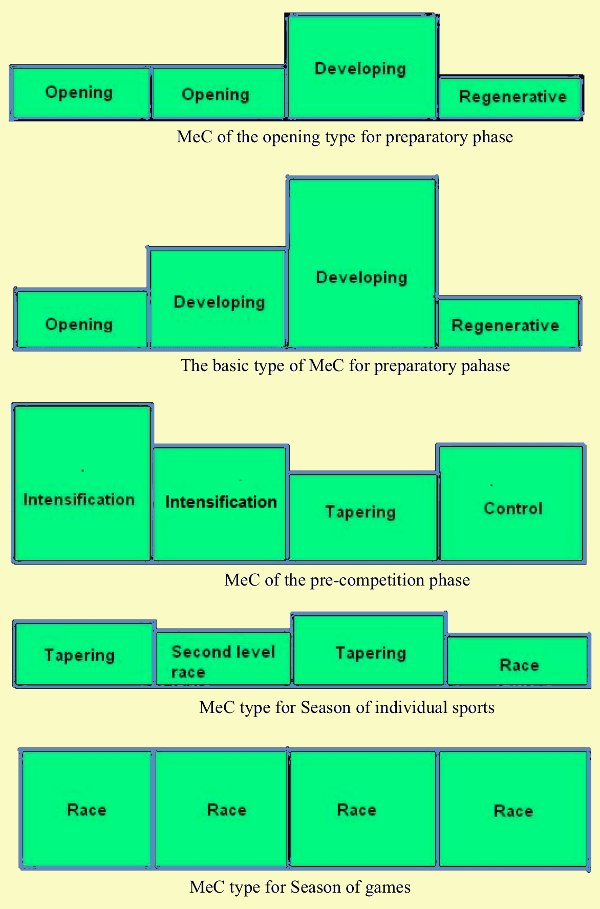
Some typical training schemes of different MeC types, columns show load volume
Macrocycle
Macrocycles can be composed of two, three or more mezocycles which must meet specific target(s). On the whole, when building a macrocycle, it is necessary to address the following features:
- Create a system of annual training plan based on competition schedule and set the duration for individual periods.
- The set of objectives for individual periods of annaul macrocycle and for shorter time periods.
- Set the proportion of general, special and competition training means (for macrocycle as well as for periods).
- Set the number of training units.
- Set load volume and intensity for annual macrocycle and distributing load into individual periods.
- Consider the progress in load volume which will follow the previous macrocycle.
If necessary, arrange for desired rate of individual adjustment while using specific training methods or load during annual macrocycle.
Principles of sports training
Principles of sports training represent recomendations, instructions or standards for coaching aiming at ensuring as much training effect as possible.
Principle of the unity of versatile and specialized training
For optimum development of an athlete, an optimum proportion of versatile and specialized training is necessary which changes in individual stages of sports training. The volume of specialized training increases gradually. Premature specialization is a mistake, i.e. high increase in specialized training in a very young age, which results in quick increase in sports performance.
Principle of continuous training process
The basic precondition of increasing and maintaining acquired sports performance is systematic training activity. It is necessary to keep optimum frequency of training units which follow the principle of supercompensation. The requirement therefore is to continuously alternate load and rest while respecting individual specifics of athletes.
Principle of gradual load increasing
Load volume must respect the current training fitness of the athlete. In a long-term perspective, load must increase gradually. On a regular basis, it is not possible to increase load without any limit. During individual stages, training periods and cycles, load increases, stabilizes and subsequently decreases. In a long-term perspective, load volume is of a wave-shape character with a long-term tendency to increase load.
Principle of wave-like load process
Activity which varies in waves is typicial of the whole living nature. Therefore, the wave-like character is moc suitable even for the process of training load (its volume and intensity). In other words, it must be carried out in changes which represent waves (just like it is not possible to eat one’s favourite meal every day). From the point of view of training in order to reach maximal performance, the intensity ways falls behind the volume wave; sports shape appears only after volume has decreased.
Cycle principle
The precondition of effective adaptation changes in athete’s organism is systematic repetition of contents and means of methods and forms of sports training with the aim to gradually increase sports performance.
Variability principle
Within meeting the aims and objetives of individual training cycles, it is necessary to alternate training contents – means, methods, type, training load. In other words, it is necessary to keep the organism stressed so as to keep ti “load-sensitive”.
S'inscrire Pour Accéder à la Totalité du Site
Conseils Sports Coaching Formation

